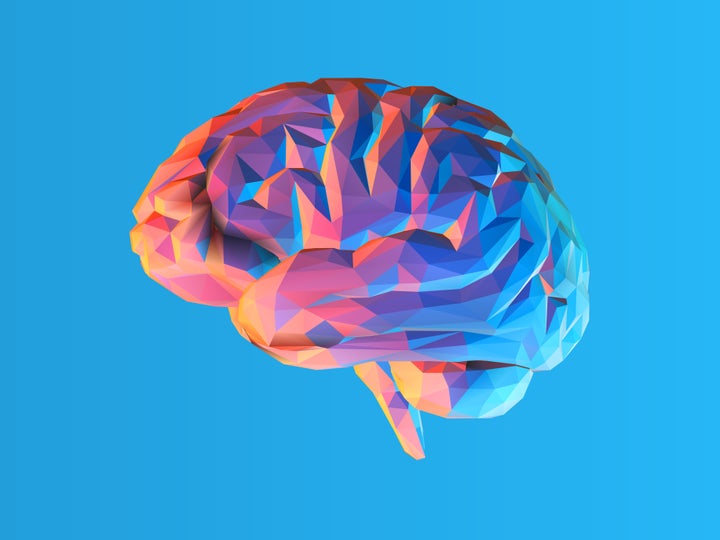
Three years ago, I held a real human brain. I still feel strange about going into too much detail about it – but it was in a university lab in second year, and I did hold it. For that moment, while we were urged to use a scientific eye to look for the structures we’d learnt from our textbooks, all I could think was this was someone’s whole life, and it’s in my hands right now. It was metaphorically, and literally, very heavy.
I’ve had a nerdy, lifelong romance with the brain; from embarrassingly owning an exercise book in childhood called Psychology For Kids to doing a degree in it later on. But in many ways I feel like we’re not encouraged to think about it very much at all. Or maybe we just don’t like to – something about a pile of wet flesh between your ears dictates the way you live your life and take in the world around you can make you feel distinctly human. We talk a lot about intentionality, rationality, choice, and free will – how clever and deliberate humans are, particularly in comparison with other species. But in reality it’s more complex than that – our brains are really, really weird. On brain awareness week, I’m using my brain to think about thinking about the brain. The further down the rabbit hole you get, the more identity becomes a very flimsy concept.
One phenomenon that lays this bare and makes me existential is what’s called cerebral localisation – which describes how brain functions take place in particular areas. If a certain area of the brain is damaged, the function associated with it can radically change, or even vanish. One of the first recorded examples of this was construction worker Phineas Gage, who demonstrated how fragile personality is after his left frontal lobe was largely destroyed by an iron rod piercing his skull while working on a railway. Phineas was a polite, kind, efficient worker but after surviving the accident, his personality was reported to be markedly changed. The newly emerged “profane, coarse” Phineas lost his job. In his case and beyond, from alexia to amnesia, we know that reading, writing, perceiving, remembering, rely on specific parts of the brain.
The frontal lobe, as Phineas demonstrated, is a social structure. But beyond this lobe, there’s a lot of other hard-wired equipment that sets us up for bonding with other humans – we’ve even got a whole structure called the ‘fusiform face area’ that’s specialised to processing other faces. The late neurologist Oliver Sacks famously had abnormalities with the area; a condition called prosopagnosia, or faceblindness, meant he couldn’t distinguish faces at all. Sacks routinely found himself chatting to his own reflection, not having realised he was looking in the mirror, rather than speaking to a fellow bearded man.
We also have less ‘control’ over some things than we like to think. We routinely undervalue our unconscious mind – mental processes that happen without our explicit awareness; we take in information all the time without thinking that we are thinking about it, and this informs our decisions and behaviours in unexpected ways. Research even suggests you’re more likely to associate someone with emotional warmth if they hand you a hot coffee rather than a cold one. Much of our decision-making takes place unconsciously, just like lots of our motor behaviour is stored and automatic; whether it’s riding a bike, or how it’s weirdly easier to play a song on the piano when you actually don’t think about it too much, our brains are full of shortcuts and hacks.
When you step back and think about it, it’s strange, the ways that we’re really quite inherently faulty. Meanwhile, those of us whose brains are commonly labelled by society as the ‘faulty’ ones – like people with mental health problems or learning disabilities – are subject to the arbitrary nature of what’s considered a ‘normal’ brain anyway. Optical illusions are common, like seeing Jesus after looking away from a wobbly black splodge, or a triangle where there isn’t one; but people with psychosis who experience hallucinations are often stigmatised as ‘mad’. Critical thought about the brain shows us that perception is always going to be subjective – we’re never really seeing reality, just our own interpretations of it.
Of course, lots of people believe in something spiritual that goes further; I don’t know how I feel about the soul, but I know what I think about the brain. It’s a weird idea – that thoughts like the one I’m having right now, along with everything you’ve ever experienced, your wants, your dreams, your nightmares, your memories, your skills, your identity, your choices, can all be contained in a warm, greyish, fleshy wet mass attached to your eyeballs. Even as you read these words, without thinking about it, you’re using multiple skills involving visual processing, recognition, memory, comprehension, and judgement, and a wild part of the brain called Broca’s area, which is allowing you to hear my voice in your head right now.
Sacks himself described the brain as an ‘orchestra’, different clusters doing incredibly specific things all in harmony, that ultimately make up who you are and what you do. It is – we are – incredibly complex, but simultaneously, frighteningly simple. Being aware of the brain means being interested in a big question: what does it mean to be anything, or anyone at all?